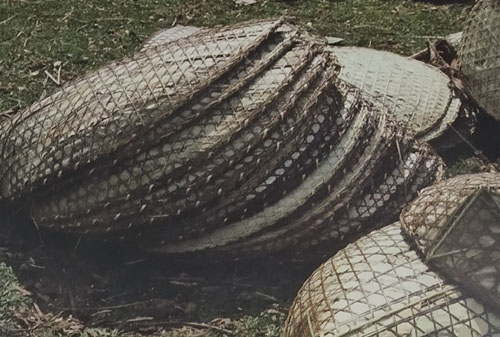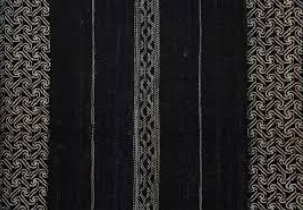The bamboo rain shield or knup is essential for the people of Mawsynram and Cherrapunji, Meghalaya, the regions receiving the world’s heaviest and second heaviest rainfall respectively. The rain shield helps them to work freely on the steep hill slopes without using their hands for extra work.
The knup is shaped like an inverted teardrop or a turtle shell when it is worn, with the broader conical top curving inwards while resting on the head. It is woven in two layers with locally available shken, a reed bamboo, and shlew which is dry palm leaf in an open-hexagonal weave. As the underlying bamboo weave runs from top to bottom the shedding water is channeled downward and away protecting the head and the back of a person up to the knee.
The shield is woven from the strips of shken over a mould made from bamboo splits. The waterproofing is done with two layers of shlew held between the woven layers. Large hexagons of the outer layer are formed first; the splits of which are folded back at the edge and woven compactly into the other elements. The inner layer has a finer weave, with dried palm leaves fastened with bamboo pins into each layer and sandwiched between them. The edges are sewn together with fine splits of bamboo.
Materials such as plastic sheets and broom grass are also used for waterproofing. Broom grass is first dipped in water, then flattened using wooden blocks and finally dried on rooftops. This process is believed to make the grass stronger and hence, likely to survive the rainstorms.
Rain shields, along with carrying and storage baskets and winnowing trays, are made by women from bamboo mould and dao/wide-bladed knife and then sold in markets.
Gallery
YOUR VIEWS
PRACTITIONERS: INDIA
Access 70,000+ practitioners in 2500+ crafts across India.
BIBLIOGRAPHY
10,000+ listings on arts, crafts, design, heritage, culture etc.
GLOSSARY
Rich and often unfamiliar vocabulary of crafts and textiles.
SHOP at India InCH
Needs to be written.






